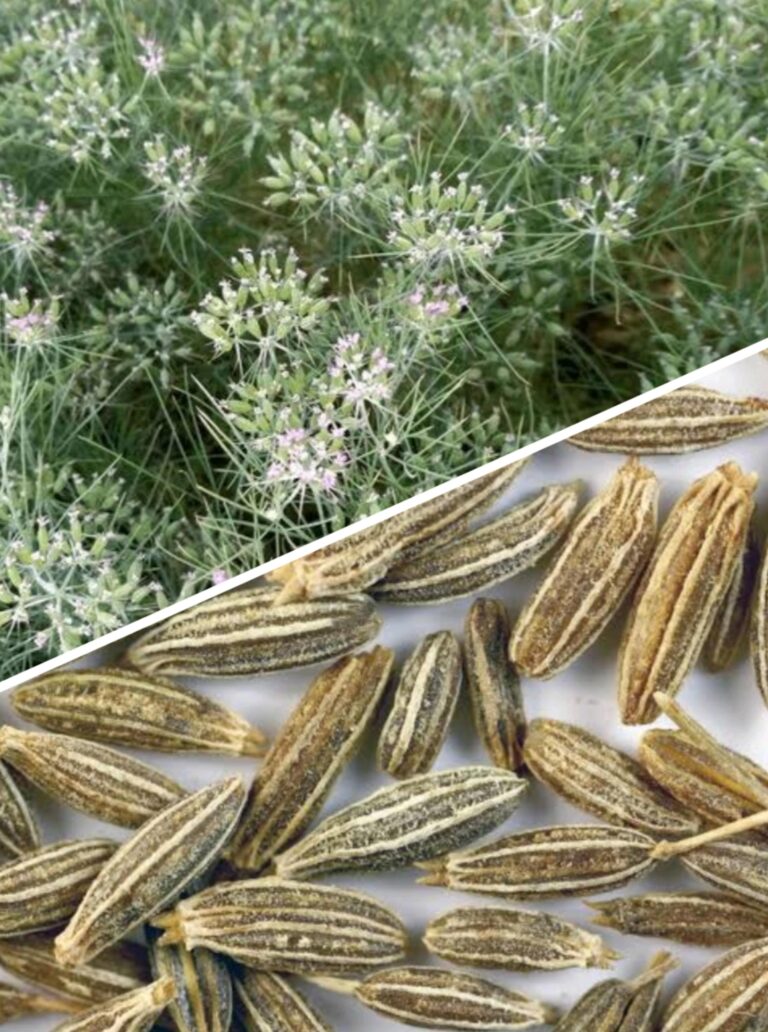Manzano Pepper: 4 Magnificent Characteristics
Introduction
When you first encounter the Manzano pepper—a round, apple-shaped chili with thick walls and black seeds that boasts a fruity yet intense heat—you meet one of the most unique members of the chili family. This pepper belongs to the Capsicum pubescens species, and it stands out from its relatives in both appearance and characteristics. In this blog, we will explore the biology, cultivation, culinary uses, nutritional benefits, and ecological significance of the Manzano pepper.
Taxonomy & Origins
The Manzano pepper is classified within the genus Capsicum, species pubescens. The species epithet “pubescens” refers to the hairy nature of its leaves, a morphological trait that distinguishes it from many other domesticated peppers. Native to the high-Andean regions of South America—particularly Peru, Bolivia, and Ecuador—this species has ancient roots. It is believed to have been cultivated for thousands of years. In Mexico, it is more commonly referred to as “manzano” (Spanish for “apple tree”), a nod to the fruit’s shape, while in the Andes it may be better known as “rocoto.”
Scientifically, Capsicum pubescens is notable for being quite genetically distinct from the more common species, such as Capsicum annuum. This distinctiveness suggests unique adaptations and traits worthy of study.
Distinguishing Biological Characteristics
What makes the Manzano pepper so interesting from a botanical and physiological standpoint? Several characteristics stand out:

- C. pubescens seeds are distinct for their black coloration, unlike many other pepper species with tan or brown seeds. This unique hue enhances their visibility, potentially aiding in identification and influencing factors like seed dispersal and survival in their native habitats. The striking color of C. pubescens seeds highlights the diversity within the Capsicum genus.
- Hairy Leaves (Pubescence) – The plant has fine hairs, or trichomes, on its leaves and stems. These structures help create a microclimate that reduces water loss in cooler temperatures or higher altitudes. They also protect against herbivores and excessive sunlight by reflecting light and deterring insects. Overall, pubescence enhances the plant’s survival and health in challenging environments.
- The fruits typically have a spherical to slightly flattened shape, similar to small apples. They are notable for having a thicker wall structure compared to many other varieties of hot peppers. This added thickness not only gives them a distinctive appearance but also impacts their texture and overall sturdiness, setting them apart from other peppers. The robust walls help the fruit retain moisture and flavor, resulting in a more satisfying crunch when bitten into.
- Altitude and Temperature Adaptation: This remarkable plant flourishes in the crisp, high-altitude environments found at elevations ranging from approximately 1,200 to 3,000 meters above sea level. In these cooler climates, where many other pepper species find it challenging to survive, it not only endures but thrives, showcasing its resilience and adaptability to the harsh conditions of its mountainous habitat.
These biological factors contribute to the Manzano pepper’s strength, flavor, and potential cultivation niche.
Heat, Flavor & Nutritional Insights
Heat Profile
The heat of the Manzano pepper places it in the “hot” category, but it is often praised for having a more controllable and layered spiciness rather than simply overwhelming. One source reports a Scoville Heat Unit (SHU) range of about 12,000 to 30,000. Another reports higher potential values up to 50,000 SHU or more. Importantly, the pepper doesn’t just deliver heat—it delivers flavor. That fruity, slightly citrus / apple-like note combined with crisp flesh makes the heat more enjoyable and versatile.
Flavor Profile
Beyond the burn, the Manzano pepper has a juicy, crisp texture and a fruity aroma/flavor profile. One description, according to PepperScale, “Manzano peppers have a refreshing citrus flavor.” Its apple-like form suggests something fruity, and it does not disappoint.” Such properties make it great for culinary applications that require both depth and heat, such as salsas, stuffing, and sauces, where you want to taste the pepper rather than merely endure it.
Nutritional and Bioactive Components
From a scientific standpoint, the Manzano pepper is noteworthy because it contains significant levels of capsaicinoids (the molecules responsible for spiciness), carotenoids (pigments with antioxidant action), and vitamin C. In a greenhouse-grown study of C. pubescens, researchers discovered considerable quantities of total capsaicinoids, vitamin C, and total carotenoids.
Capsaicinoids in this species have been related to a variety of biological functions outside flavor, including anti-inflammatory actions, cardiovascular stimulation, and catecholamine production, among others. From a nutritional standpoint, the Manzano pepper is more than just a heat-delivery vehicle; it is also a meal with potential functional value.
Cultivation & Agronomy Highlights
Growing Manzano peppers involves both opportunity and unique considerations. Given your interest in scientifically informed gardening (with living soils, microbial synergy, and so on), a few cultivation aspects are very relevant.
Growing Environment
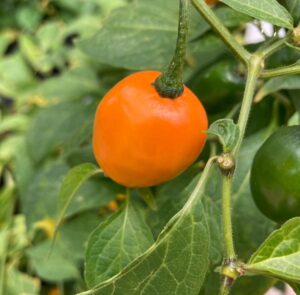
According to an article published on scielo.org.mx/, C. pubescens is adapted to cooler, higher-altitude temperatures, with altitudes in Mexico ranging from 1,200 to 3,000 meters.
In contrast, several chile species require warmer, lowland tropical climates. As a result, if you’re growing Manzano pepper in a lower-altitude, warmer climate (such as many parts of Pakistan), you may need to modify the micro-environment to provide cooler nights, shade during midday heat, and adequate airflow.
Soil & Cultivation Preferences
- It prefers well-drained soils with regular watering but no waterlogging
- Selecting proper germination and transplant methods is critical: germination may take longer, and seedlings benefit from stable environments
- Patience is essential, given the thicker fruit walls and longer maturity time (particularly in cooler climates)
- In mild regions, the species behaves more like a perennial, with plants lasting several years
Disease & Crop Challenges
There are significant disease pressures in Manzano pepper cultivation. For example, research in Mexico discovered that wilt illnesses caused by pathogens such as Fusarium oxysporum, Rhizoctonia solani, and Phytophthora capsici had a major impact on crop yield, with susceptibility varying by genotype. This emphasizes the significance of selecting disease-resistant genotypes, implementing crop cleanliness, maintaining proper drainage, and checking for root infections.
Genetic Diversity & Landraces
According to research, Manzano pepper landraces still exhibit significant physical and genetic variety, particularly in Mexico’s highlands. For example, two genotypes studied in Veracruz differed in plant height, fruit size, seed number, and other quantitative characteristics. This diversity is helpful because it allows for the selection of cultivars with higher yields, disease tolerance, fruit quality, and adaptation to specific local conditions.
Culinary & Cultural Significance
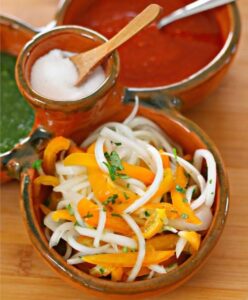
The Manzano pepper boasts a diverse cultural and culinary profile. Because of its Andean heritage, it is used in traditional cuisines (such as the renowned Peruvian “rocoto relleno”) and is prized for its fruity flavor and heat. In the marketplace, its look (apple-shaped, thick-walled) and flavor profile distinguished it from many other chiles.
From a culinary perspective, this pepper is particularly suitable for:
- Fresh salsas where texture and flavor are important
- Stuffed pepper preparations due to their thick walls
- Sauces and condiments with heat and fruitiness
- Pickling or preserved forms, especially when collected at various ripeness stages
Because of its flavor complexity, it provides chefs and home cooks with an appealing ingredient that goes beyond the traditional “just hot” pepper.
Benefits and Positive Aspects
Here are some of the standout positive features of the Manzano pepper:

- Flavor depth – The mix of delicious, crisp texture and balanced heat makes it a more appealing pepper in terms of taste than spiciness alone
- Nutritional/functional substances – The inclusion of capsaicinoids, carotenoids, and vitamin C demonstrates that even trace levels can provide useful chemicals
- Cool-climate adaptation – For gardeners in cooler climes (or at high elevations), it provides a viable pepper species where others may fail
- Genetic diversity – The existence of distinct landraces allows for the breeding or selection of variants that are best suited to local conditions and demands
- Cultural legacy – Growing Manzano peppers connects you to a plant lineage that has been revered for ages, combining science and tradition
In short, if you’re searching for a pepper that provides more than just heat, thrives in unusual settings, and has both gastronomic and horticultural appeal, the Manzano pepper is an excellent choice.
Practical Tips for Gardeners (and Home Growers)
Drawing on scientific knowledge and practical experience, here are some concrete recommendations to help you grow Manzano peppers more successfully. I am sure you dived deep into our previous blogs and got some inspiration to grow your own varieties.
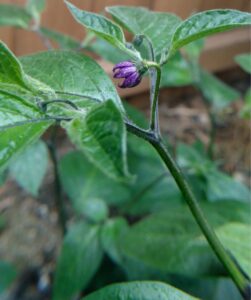
- Plant seeds early – Because the fruiting time may be prolonged, start seeds in a controlled setting. Ensure steady temperature (germination may be slower than with other species)
- Use a rich, well-drained soil. A living-soil approach works great: integrate compost, helpful microorganisms, and maintain good structure so roots can get oxygen
- Shade during peak heat – If your garden is in a warmer, lower-altitude zone than the Andes, provide some shade during the midday heat and, if possible, cooler night conditions
- Monitor root health – To reduce the risk of wilt pathogens, minimize overwatering, rotate crops, and explore soil-borne pathogen suppression
- Harvest when the fruit turns yellow, orange, or red, depending on the variety. Early green fruit will be less sweet and more vegetal
- Preserve flavor – Because the flesh is thick and juicy, this pepper is great for fresh eating, stuffing, pickling, and creating sauces
- Seed-saving for adaptation – If you’re inclined, keep seeds from your best-performing plants so you can gradually pick varieties that adapt even better to your specific local soil and environment
- Pair with microbiome-focused care. Because you value living soil systems, make sure your pepper plants have a diverse microbial community: mycorrhizae, earthworms, and compost teas will boost root vitality and promote good fruit production.
Ecology & Sustainability Considerations
From an ecological perspective, the Manzano pepper offers interesting opportunities for sustainable agriculture:
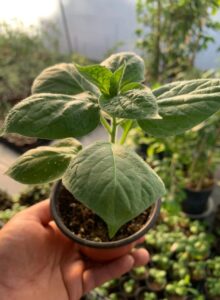
- Its propensity to grow in colder, higher-altitude zones allows it to participate in cropping systems that others do not, diversifying productivity and lowering pressure on low-altitude monocultures
- Conservation of landraces is valuable because of the genetic variety within the species—the more unique types preserved, the higher our chances of future climate-resilient breeding
- Because of its thick-walled fruit and unique shape, it may command a premium price in specialist markets, providing small-scale growers with a potential for value-added production
- Incorporating it into agroecological systems is consistent with polyculture, intercropping, and the utilization of living soils—particularly considering its adaptation to mountain regions where soils frequently require careful management.
Challenges & Caveats
No crop is entirely without challenges, and Manzano peppers do require mindful management:
- Because they are evolved to colder, high-altitude conditions, they may suffer in highly hot, humid, or lowland tropical environments without proper microclimate control
- They have specific disease susceptibilities (wilt, root infections), necessitating proactive care
- Seed availability and varietal constancy can be less robust than for common chili species; therefore, acquiring trustworthy seed stock is critical
- Their prolonged fruit growth period and potentially poorer yields (in non-ideal conditions) necessitate patience and attention
However, these problems are doable, and can even be considered as opportunities for attentive, informed gardeners to excel.
The Future of Manzano Pepper in Home Gardening and Cuisine
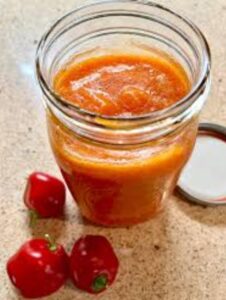
Given current trends—interest in tasty, heritage crops; specialty product markets; and resilient gardening in varied climates—the Manzano pepper is poised for a comeback. It is an excellent choice for home gardeners who value flavor as much as yield, as well as those who care about soil health and environmental systems. Furthermore, because of its specific character (form, seeds, flavor, species), it tells a story: a pepper from the high Andes that has been altered by generations and introduced into new locations, linking cultivation to cultural lineage and scientific inquiry.
As more gardeners experiment with living soils, companion planting, microbial augmentation, and altitude-adapted crops, the Manzano pepper might become a flagship species illustrating how intelligent cultivation provides not only produce, but also experience, flavor, and sustainability.
Conclusion
The Manzano pepper (Capsicum pubescens) is an extraordinary plant that blends flavor, science, history, and horticultural interest. The apple-like fruits, thick walls, black seeds, and fruit-forward heat profile set it apart from other pepper varieties. From its Andean origins to its growth at high Mexican altitudes, adaptation to lower climes, bioactive chemicals, and a unique place in gourmet food, it provides a diverse range of interests for gardeners, chefs, and scientists alike.
Given your interest in scientifically informed, soil-rich, inventive gardening, this pepper may be an excellent addition: an opportunity to experiment with ecologically sound growing methods, to discover flavors beyond the ordinary, and to interact with a plant with a unique story.






